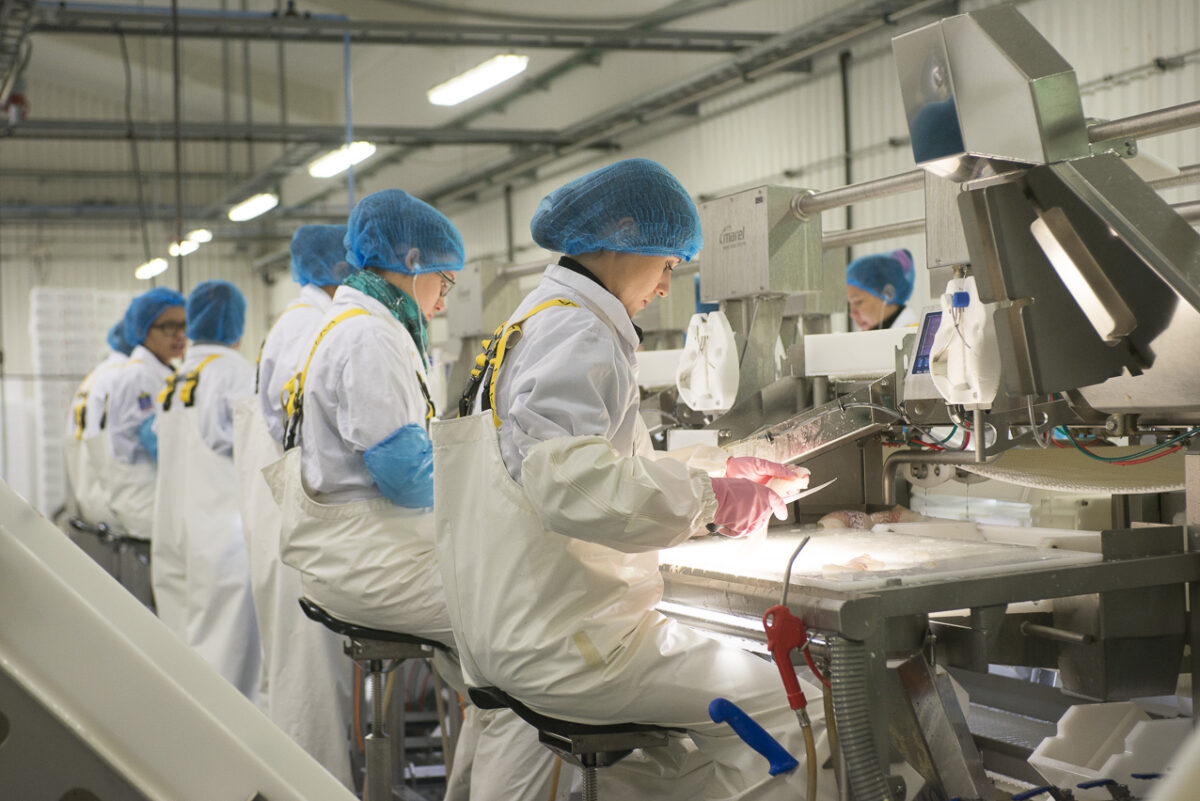Samstarf um rannsóknir og þróun í sjávarútvegi er liður í þróunarsamvinnu Íslendinga. Með þeim hætti er lagt upp með að nýta sérþekkingu Íslendinga á sviði hvar Íslendingar standa framarlega svo stuðla megi m.a. að bættu fæðuöryggi á grunni sjálfbærrar auðlinda nýtingar. Slíkt samstarf leiddi nýverið í ljós niðurstöður sem styrkja rökin fyrir mikilvægi vandaðra og agaðra vinnubragða við framleiðslu á fiskflökum.
Í nýliðnum maí mánuði kom út grein í Journal of Food Engineering um áhrif umhverfishita og bið hráefnis við flakavinnslu. Greinin byggir á rannsókn sem unnin var í samstarfi í tengslum við áherslur Íslendinga í þróunarsamvinnu, hvar lagt er upp með að nýta sérþekkingu Íslendinga á sviði fiskvinnslu. Að rannsókninni unnu einkafyrirtæki og opinberir aðilar í sameiningu, slíkt samstarf er liður í því að Íslendingar leggi sitt af mörkum til að mæta heimsmarkmiðunum.
Kínverskur nemandi við Sjávarútvegsskóla háskóla sameinuðu þjóðanna (UNU-FTP), Mu Gang, vann að rannsókninni undir handleiðslu íslenskra leiðbeinenda meðan á námsdvöl hans stóð hér á landi. Leiðbeinendur Mu Gang voru dr. Kristín Anna Þórarinsdóttir hjá Marel, Ásbjörn Jónsson og Arnljótur Bjarki Bergsson hjá Matís og var rannsóknin unnin hjá Matís.
Í greininni má sjá niðurstöður sem styrkja rökin fyrir mikilvægi vandaðra og agaðra vinnubragða við framleiðslu á fiskflökum. Markviss kæling gegnir lykilhlutverki við varðveislu gæða. Eins mikilvægt og það er að lágmarka hnjask sem fiskurinn verður fyrir frá veiðum að neyslu er jafnframt mikilvægt að draga úr töfum sem kunna að verða í vinnsluferlinu. Eins og komið hefur fram á öðrum vettvangi skiptir blóðgun, blæðing (blóðtæming), þvottur og kæling miklu máli um borð í fiskiskipum, sama máli gildir um skilvirkni og viðhald lágs hitastigs við flakavinnslu.
Þó allt kapp sé lagt á að vanda vel til verka við vinnslu fisks í flök, kann það að koma fyrir að fiskur rati ekki eins hratt í gegnum vinnsluna og ráð er fyrir gert eða að fiskur fari um rými sem er hlýrra en best væri á kosið. Niðurstöður rannsókninnar sýna vel afleiðingar þess ef vikið er frá upplögðu verklagi þ.e. að viðhalda lágu hitastigi í gegnum vinnsluferlið, jafnvel þó frávikið sé skammvinnt. Hár umhverfishiti og tafir við vinnslu leiða til rýrnunar á þyngd og verðmætum afurða. Því er mikilvægt að forðast flöskuhálsa sem leiða til uppsöfnunar fisks í vinnslurásum, sér í lagi við lítt kældar aðstæður. Auk þess er bent á að mikilvægi sé að hitastig afurða við pökkun sé sem næst geymsluhitastigi.
Þekkingin sem skapaðist með rannsókninni er dæmi um ávexti langs og farsæls samstarfs Matís og Sjávarútvegsskóla háskóla Sameinuðu þjóðanna við íslensk sjávarútvegsfyrirtæki sem og fyrirtæki sem þjónusta íslenskan sjávarútveg, s.s. Marel. Mikil þekking skapast í háskólasamfélaginu og hafa vísindamenn unnið í víðtæku samstarfi að þróun og innleiðingu hennar hjá öflugum ábyrgum sjávarútvegsfyrirtækjum. Samstarf um hagnýtingu þekkingar hefur gert íslenskum fiskiðnaði kleift að taka stórstígum framförum svo eftir hefur verið tekið víða um veröld. Það hefur gert íslenskan sjávarútveg að þeim þekkingariðnaði sem hann er í dag og býr í haginn fyrir þróun hans til framtíðar.
Marel er í hópi stærstu útflutningsfyrirtækja Íslands og í fararbroddi á heimsvísu í þróun og framleiðslu á háþróuðum búnaði og kerfum til fiskvinnslu.
Matís veitir ráðgjöf og þjónustu um allan heim til viðskiptavina s.s. fyrirtækja í sjávarútvegi og landbúnaði. Matís aðstoðar viðskiptavini við þróun og innleiðingu þekkingar þ.m.t. nýjrra ferla fyrir fyrirtæki með hagnýtingu vísinda.
Íslensk sjávarútvegsfyrirtæki vinna að verðmætasköpun með sjálfbærni að leiðarljósi, líffræðilegri, efnahagslegri og samfélagslegri.
Sjávarútvegsskóli háskóla sameinuðu þjóðanna er einn af fjórum skólum háskóla Sameinuðu þjóðanna sem hýstur er á Íslandi og hefur að markmiði að efla sérfræðiþekkingu í sjávarútvegi; fiskveiðum og fiskvinnslu í þróunarríkjum.

